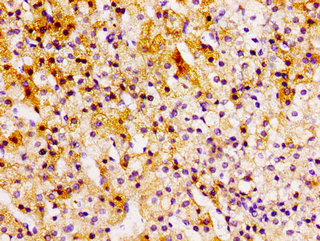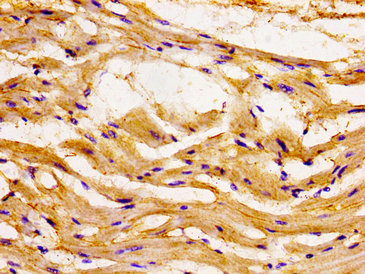Full Product Name
Rabbit anti-Homo sapiens (Human) CCL15 Polyclonal antibody
Alternative Names
C-C motif chemokine 15 antibody; C-C motif chemokine ligand 15 antibody; CC chemokine 3 antibody; CCL15 antibody; CCL15(29-92) antibody; CCL15_HUMAN antibody; Chemokine (C C motif) ligand 15 antibody; Chemokine CC-2 antibody; Chemokine CC2 antibody; HCC-2 antibody; HCC2 antibody; HMRP 2B antibody; HMRP2B antibody; Leukotactin 1 antibody; Leukotactin-1 antibody; LKN-1 antibody; LKN1 antibody; Macrophage inflammatory protein 5 antibody; MIP 1D antibody; MIP-1 delta antibody; MIP-1D antibody; MIP-5 antibody; MIP1 delta antibody; MIP1d antibody; MIP5 antibody; MRP 2B antibody; Mrp-2b antibody; Mrp2b antibody; NCC 3 antibody; NCC-3 antibody; NCC3 antibody; New CC chemokine 3 antibody; OTTHUMP00000163955 antibody; SCYA15 antibody; SCYL3 antibody; Small inducible cytokine A15 antibody; Small inducible cytokine subfamily A (Cys Cys); member 15 antibody; Small-inducible cytokine A15 antibody; SY15 antibody
Immunogen
Recombinant Human C-C motif chemokine 15 protein (22-113AA)
Immunogen Species
Homo sapiens (Human)
Conjugate
Non-conjugated
The CCL15 Antibody (Product code: CSB-PA614984LA01HU) is Non-conjugated. For CCL15 Antibody with conjugates, please check the following table.
Available Conjugates
| Conjugate |
Product Code |
Product Name |
Application |
| HRP |
CSB-PA614984LB01HU |
CCL15 Antibody, HRP conjugated |
ELISA |
| FITC |
CSB-PA614984LC01HU |
CCL15 Antibody, FITC conjugated |
|
| Biotin |
CSB-PA614984LD01HU |
CCL15 Antibody, Biotin conjugated |
ELISA |
Purification Method
>95%, Protein G purified
Concentration
It differs from different batches. Please contact us to confirm it.
Buffer
Preservative: 0.03% Proclin 300
Constituents: 50% Glycerol, 0.01M PBS, pH 7.4
Tested Applications
ELISA, IHC
Recommended Dilution
| Application |
Recommended Dilution |
| IHC |
1:20-1:200 |
Storage
Upon receipt, store at -20°C or -80°C. Avoid repeated freeze.
Lead Time
Basically, we can dispatch the products out in 1-3 working days after receiving your orders. Delivery time maybe differs from different purchasing way or location, please kindly consult your local distributors for specific delivery time.
Usage
For Research Use Only. Not for use in diagnostic or therapeutic procedures.






